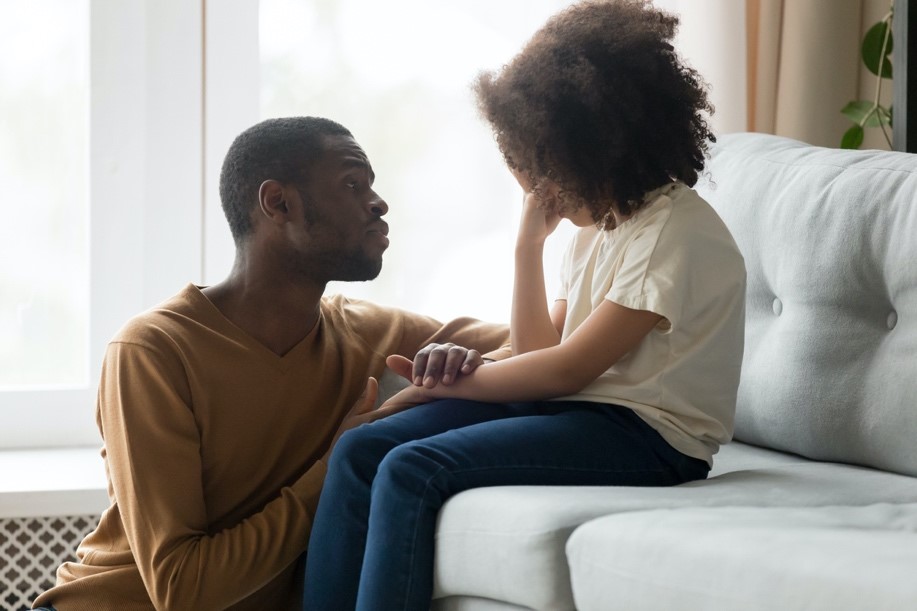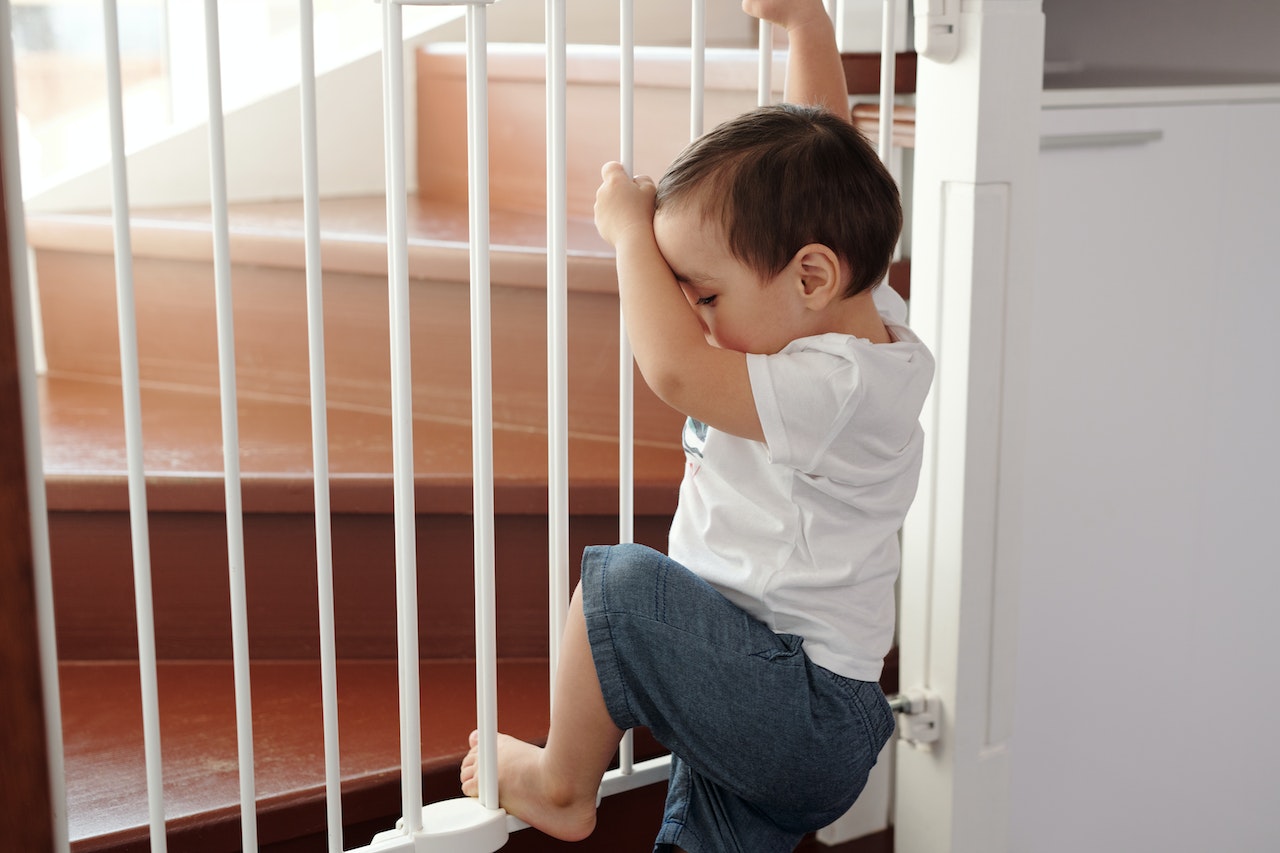If you suffer from PTSD, you know that feeling of overwhelming helplessness as you relive a past trauma, leaving you emotionally shattered with each episode. Overcoming PTSD is not a fast solution, but there are things you can do around your home and in your lifestyle to help you cope better on a daily basis.
What is PTSD?
PTSD stands for “post-traumatic stress disorder,” and can show up after you survive a dangerous or life-threatening experience. This triggering experience can be something like military combat, childhood abuse, rape or sexual abuse, a miscarriage, a divorce, or another traumatic experience. People who perform dangerous or emotionally stressful jobs, like firefighters or paramedics, can suffer from PTSD as well. PTSD can include anxiety and depression. Symptoms of anxiety include feeling out of control, and depression may be characterized by feeling anxious, sad (not just for a short duration), hopeless, or even suicidal. Neither depression nor anxiety requires a past trauma to exist. Please seek professional medical advice if you are feeling any of these symptoms.
PTSD treatment includes psychological therapies, Cannabis, medicines, etc but this is a less known fact that our home also plays an important role in the treatment. Home is where we spend much of our time, so if you’re suffering from PTSD, depression, or anxiety, your home atmosphere is important. There are ways you can alter your surroundings and your lifestyle to help you manage a difficult mental health condition. Our helpful tips can help you ease the symptoms and bring a much-needed boost to your mental outlook.
Interior Design for PTSD
There are ways you can redesign your house to help you cope, and these projects don’t have to be major to result in a positive change.
For starters, let the light in. Brighter rooms help lift your mood, and sunlight helps your body produce Vitamin D and serotonin, which acts as a natural antidepressant in your brain. Instead of light-blocking shades or blinds, try hanging sheer curtains that let filtered, cheerful light into the room. If you need blinds for night-time privacy, open them during the day to bring that brightness indoors.
If your place doesn’t have a lot of windows, you can introduce more light by hanging a mirror strategically across from the window to reflect light back into the room. A mirror can also break up the monotony on a wall and give the appearance of another window.
Now that you have more natural light shining into your space, welcome some plants. Not only beautiful to look at, but plants are also beneficial. They use carbon dioxide (which we exhale) and release oxygen, giving us a healthier atmosphere. The process of taking care of plants can also be a calming experience. If you don’t have a green thumb, pick a hardy, easy-to-grow plant like a pothos, which happens to be one of the best plants to remove toxins from the air.
Other types of plants that have been found to naturally help with anxiety and depression are peppermint, mums, gerbera, chamomile, lavender, aloe vera, and jasmine. Parlor palms, easy-care cacti, and other plants can give your space a calming, natural appearance.
Take a look at your walls. Are they dark? Brightening up the colors of a room has been shown to have a positive effect on those suffering from PTSD, anxiety, or depression. A new coat of paint in sunshine yellow, a soft, calming seafoam green, or soft baby blue or even adding some life to your walls might be just the thing to give a subtle lift to your difficult days.
While you’re looking critically at your rooms, consider what’s around: clutter like piles of paper, last night’s pizza box, and unfolded laundry on the sofa all contribute to a feeling of anxiety. Visual clutter isn’t calming or reassuring when you’re dealing with PTSD, depression, or anxiety, and it can keep you from sorting through your emotions.
Get Active, Feel Better
Getting outside and being active can help with PTSD symptoms. Regular exercise naturally relieves stress and anxiety because it releases endorphins, often called the “feel-good” hormones. You’re living in the moment as you move your body with karate, weight training, or rock climbing. Here are some ways you can help improve yourself physically, which can reduce your symptoms.
Get moving. Many people find the act of moving arms and legs in a rhythmic movement, such as jogging, walking, or swimming, to be therapeutic. You don’t have to do cardio all day, every day. Aim for about 30 minutes of cardiovascular exercise on most days of the week. Consult with your doctor, and set forth on an exercise program that’s tailored to your needs and abilities.
Get more sun Just as letting sunlight into your home is beneficial, being outside in the sunlight helps reduce anxiety and boost crucial nutrients like Vitamin D. Sit on the front porch and let your skin soak up a few minutes of the sun, or go for a walk.
Seek nature. Taking part in outdoor activities like canoeing, hiking, camping, fishing can help you relax and find peace, especially for veterans with PTSD who may find it difficult living in society. Or, sit in nature and watch squirrels or other wildlife, or just experience the gentle swaying of trees in a forest. Spending time in nature may help veterans transition back to civilization, too.
Sleep well if you can. Although sleep may be difficult for some PTSD, anxiety, or depression sufferers, try to maintain 7 to 9 hours of sleep at night. At bedtime, make sure your bedroom is dark and quiet, an oasis for slumber. Put alarm clocks on a dim setting, and try to refrain from being on the computer just before bed. Keep a nightly bedtime routine.
Consider what you’re eating. Although comfort foods are tempting when you’re having a bad day, make an effort to eat healthy foods to give your body maximum nutrition. Eat fresh foods and limit processed foods with refined sugars and starches that can trigger changes in your energy level and mood. Add fish, nuts, and flaxseed to your diet to increase Omega 3s which can help your emotional health.
Relaxation, Mindfulness Meditation
Learning to relax and meditate can provide excellent benefits for anyone suffering from PTSD, anxiety, or depression. Learning meditation techniques like mindfulness, deep breathing, and progressive muscle relaxation can help you reduce symptoms of anxiety while increasing your feelings of emotional well-being. Meditation can help you calm down your “fight or flight” sympathetic nervous system, reducing stress hormones.
Mindfulness meditation can help you cope better with trauma-induced thoughts and memories that may invade your daily life. This practice may also help you handle emotional distress better. Meditation is not a fast process, but one that you build slowly. The more you regularly practice it, the more you’ll find it can help not only with your symptoms but with your daily life.
Find a meditation guide for those who’ve suffered trauma or who have anxiety or depression. Find a place you consider safe for your meditation practice.
If you’re not ready to participate in group meditation, that’s okay: you can build that mindfulness in other ways, look for comforting, repetitive activities like sewing, washing dishes, knitting, and cooking. Doing a chore helps you keep your thoughts on the activity at hand.
Massage and yoga can act in the same way as meditation, helping release stress and relax muscles while inspiring in-the-moment mindfulness. Look for beginner yoga classes in your area and learn to listen to your body, which can help tune you into your emotions and help you control them.
Aromatherapy
Aromatherapy, or inhaling the scents of essential oils, may help improve your sense of well-being, reducing anxiety and stress. There are many kinds of essential oils, and researching their uses is essential. For instance, essential oils must be diluted with what’s called a carrier oil (like coconut oil or almond oil) before they’re applied to the skin. Essential oils can also be used in diffusers. Don’t swallow essential oils – some can be toxic, so always talk with your doctor before using them.
Passively breathing in essential oils (or a combination of oils) can foster a specific healing experience. For instance, lavender is well-known for helping you relax and sleep, while lemon oil can help with mild depression symptoms. Some essential oil blends address tension or promote a peaceful feeling, while others help calm your nerves. A wide array of available oils and oil blends helps you choose which work best for your individual symptoms.
Some other aromatherapy essential oils believed to help anxiety or depression include chamomile, jasmine, orange, valerian, bergamot, geranium, marjoram, ylang-ylang, sweet basil, holy basil, patchouli, frankincense, vetiver, rose, and jatamansi. Remember to buy only from reputable sources because essential oils aren’t monitored by the FDA. CBD is another natural substance that may help alleviate your symptoms of anxiety or PTSD.
Art Therapy
Many sufferers of PTSD find art therapy helps them express and work through past trauma. Without realizing, you can tap into trapped emotions or thoughts and give them a voice in a safe environment just by painting, sculpting, drawing, or coloring. Concentrating on that creative activity can open up ways of expressing and dealing with terrifying past experiences, which can then lead to healing. While creating art, PTSD sufferers may find it easier to connect with other people and talk about complex feelings and hard-to-discuss topics like trauma.
How does it work? Doing art (of all kinds) can actually change neural pathways in your brain. This can lead to increasing a connection between the mind and body, the conscious and the unconscious. The process of painting or drawing (or doing other art) can trigger a part of your brain that’s not so available when you’re just talking and helps you process better.
Doing art can not only open up passions you didn’t know you had, but it can be a stress-busting, meditative process in a safe place, a mindfulness activity you can practice whenever you need to. When you’re mixing paints or concentrating on coloring within the lines of intricate patterns, you can concentrate on that specific activity alone in a calming, live-in-the-now manner. Therapists use art therapy along with other kinds of treatments to help you find the combination that works best for you.
Therapy, Emotional Support, and Service Dogs
It’s been shown through research that interacting with therapy dogs can increase a person’s feel-good chemicals like oxytocin and dopamine while reducing the stress chemical cortisol. Therapy dogs have been used with great results to lift spirits and help ease symptoms of PTSD, anxiety, and depression. A therapy dog is specifically trained to give comfort and acceptance to people in places like nursing homes, hospices, and hospitals. Contact local service dog groups to find out if visits can be arranged in your home. This might be beneficial if you cannot care for a dog yourself.
You may also want to consider getting an emotional support pet or a PTSD assistance dog. Emotional support animals are not trained to help you deal with PTSD specifically, but they can enrich your life with love, companionship, and acceptance, helping stave off loneliness. They can boost your mood and entice you to take walks so you become more active. Emotional support pets are not afforded special public access rights, but they can give you years of enjoyment.
Service dogs for PTSD go through lots of specialized training and are taught psycho-grounding behaviors that can help address the panic and anxiety associated with PTSD. For instance, service dogs can sense subtle changes in your behavior from PTSD triggers and can do things like become an actual barrier between you and the public, helping provide you with a sense of security and comfort. If someone is suffering from night terrors or nightmares, the dog is trained to wake that person, and service dogs can lead a person to an exit during a panic attack or emergency or summon help.
Service dogs also are taught other behaviors specific to each sufferer, including placing their bodies on specific stress-reducing points on your body or nudging or pawing during certain times to distract or redirect the person. These dogs can bring medicine when a timer goes off and can even be conversation starters to help you build social relationships. They must be perceptive and intuitive to the needs of someone suffering from PTSD, anxiety, or depression. These dogs are skillfully trained to perform the jobs specific to each person’s needs and can be amazingly life-changing for the dog’s owner.
Under the Americans with Disabilities Act, service dogs have full public access rights, so you can take them where you go, including into stores and restaurants, on public transportation and planes. You can search up groups like Service Dogs for America to see if you can be paired with a service dog.
Create Liminal Space
Creating what’s called liminal spaces can help you cope with PTSD or anxiety. Liminal spaces aren’t common knowledge, but we’ve all encountered them. Often difficult to describe, they’re basically a place between areas or times. Think back to a place or time when you stopped whatever you were doing and thought, now this is just a … safe place. It’s like the moment the sun sinks into the horizon, a foggy sunrise, a deserted early-morning street, or an empty church. It’s sort of a sacred space.
When PTSD or anxiety keeps you from dealing with what’s right in front of you, sometimes it’s beneficial to go to this sort of safe space. You can create it right where you are, with some practice. Declare your liminal space, using words or gestures, and trick your brain so it enters into a trance-like state by meditating, chanting, or drumming. Some prefer to go to a specific location that they feel is a liminal space, like a property boundary, a place in the woods, or a crossroads.
Find What Works For You
Everyone suffering from PTSD has a unique story and different needs for treatment and support. Changing your home surroundings and making some lifestyle adaptations can help you manage your symptoms. PTSD isn’t a sign of weakness, so have patience with yourself and try different things like joining a PTSD support group and talking to a trustworthy friend or trained counselor who can help you overcome your past trauma.




